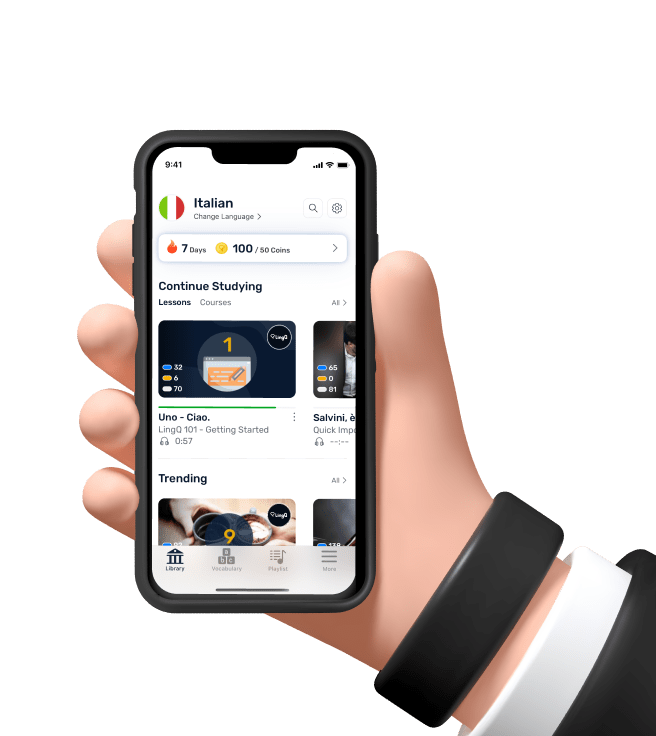1.14 (V) 01.10 - Part 1 - Visionary Language (1)
Now when you sit down to create your vision, it's one thing to be able to answer the three questions that we've talked about. But you also have to think very carefully about the language that you're going to use to communicate that vision. Over the past decade or so, we've been doing a lot of research around the language that leaders use to communicate visions to their employees, to people, in ways that will compel those individuals to want to be part of the organization, to want to be part of this team. And what I am going to share with you right now is a simple framework, a simple checklist, around the language that you can use to communicate a really compelling vision. The first in this checklist is to refer to a set of fundamental values. Again, your answer to our third question, How must we act in order to be successful?, really gets at these values. You want to refer to those values when you're communicating your vision to your team. Refer to them, not necessarily explicitly, by calling out the value of x, the value of y, the value of z. You can do that. But even more effective is to use stories, anecdotes, metaphors or analogies as communication vehicles to transfer the meaning of those values. It's one thing to say that we value integrity. It's another thing to tell a story about an employee who did, quote unquote, the right thing when nobody was watching, if you will, the definition of integrity. So think very clearly and carefully about what values do I wanna communicate, and then what stories would best resonate with my employees. And what stories would resonate with my employees may be completely different than the stories that resonate with yours. What anecdotes, what metaphors, what analogies. You have to think very carefully about what's going to resonate with my audience. You also want to use rhetorical questions, much like I'm doing with you here, where I ask you questions that don't necessarily have an answer to them, but that provoke thought. And that's the rhetorical question. You also wanna think carefully about using three-part lists. If you pay attention to presidential candidates, for example, in the United United States during election season who are going around and sharing with American citizens their vision for the country. If you pay careful attention to many of them, not all, but many of them, you'll pick up on a theme or a trend, and that is they start their speech with, Here are the three things I'm going to tell you. Then they will go through and tell you those three things at length. Then when they conclude they will remind you of that three-part list. It's a very effective technique for enabling people to remember the message that you're trying to communicate. So again, rhetorical questions combined with a three-part list, very effective communication vehicle for articulating your vision for your team to the people in that team, your employees. You also want to outwardly express moral conviction. And what I mean by moral conviction here is, why does it matter? Here you want to go back to your answer to the first question, Why do we do ultimately what we do as a team? In some of our latest research, we've found that referring to the beneficiaries of your work. Again, why do we do what we do? Who are we benefiting through our work? Referring to those beneficiaries is hugely impactful. A colleague of mine and friend, Adam Grant at Wharton Business School, has been doing a lot of research on the motivational benefits of referring to these beneficiaries of your work. And we will share with you some of that research when we talk about motivation and what people value. But that work comes back to this notion of expressing moral conviction about why we do what we do and why does it matter. The more you can clearly communicate to your audience that moral conviction, why we do what we do and why it's so important, the more they will embrace and get behind that vision that you're trying to communicate. You also want to pay very careful attention to the language you're using if you are the so-called leader. Whether your title is CEO or manager or otherwise, be very careful not to use words like I. I want this, or I see our vision as being whatever you ultimately see it as being. Instead of I language or me language, what you want to do is use what we call inclusive language. We, our, our team, we as a collective are going to accomplish and be successful. The more you can use inclusive language, the more your audience will feel part of the vision that you ultimately are trying to create. They'll buy into it, they'll get behind it, even if their ideas aren't the ones that are ultimately supported. If you go back to Steve Jobs in the 1997 video, he explicitly states it's not as if all of your ideas are gonna be supported. But what he does is uses inclusive language to get them on board with the vision such that even if their idea is not the one that's accepted, ultimately they understand why and they're part of something bigger than themselves. This inclusive, collective language. And then finally is you want to repeat. You want to repeat your message multiple times. Any time you have an opportunity to communicate to your team, this is an opportunity to reinforce the vision that you have. And when you're communicating, make sure that you're repeating the key message. So again, if we go back to the Steve Jobs video, you'll remember language that he repeated multiple times, getting back to the basics. I was not in that room that day, but I expect the people who walked out of that room who were there and when they left, statements or phrases like getting back to basics were the ones they remembered. Part of the reason they remember that is because of the repetition. So now you have a checklist. So as you sit down to create the vision and think about how you wanna communicate that, use this checklist as a tool, a framework for creating the language that you ultimately want to use. And what I'm gonna do now is share with you a short video clip from a film.

